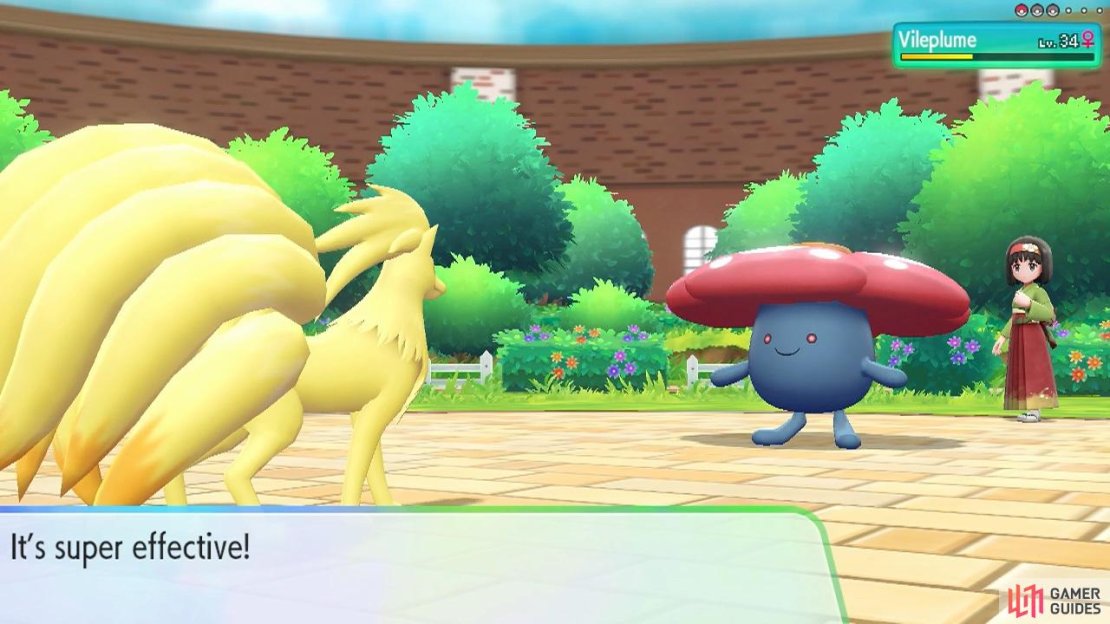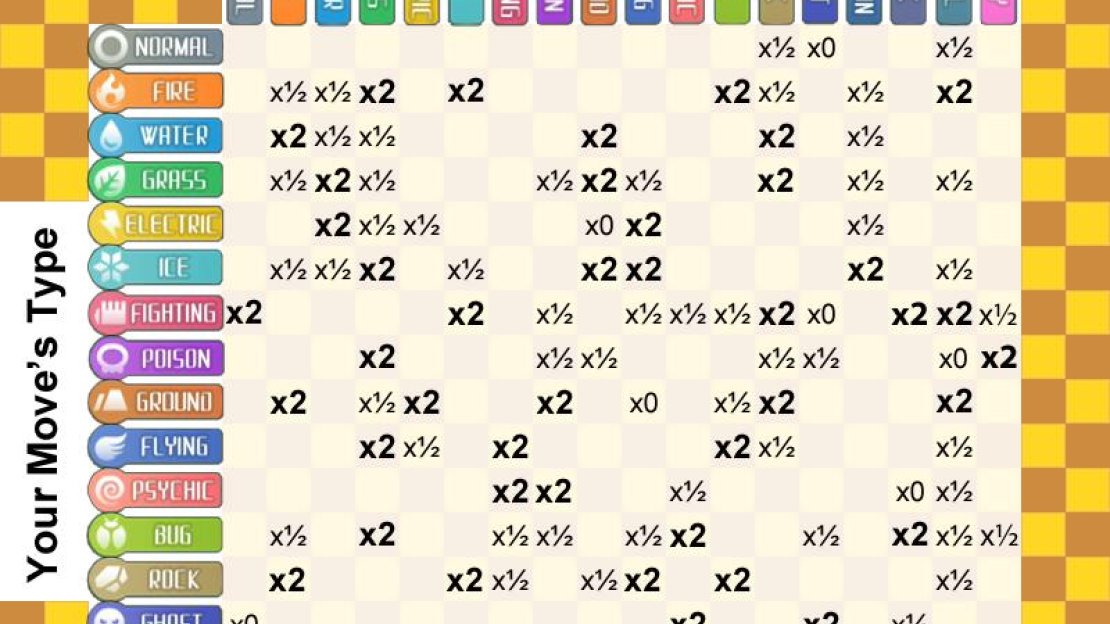Landing a super effective hit always feels good.
If you want to be the very best, you must learn to take advantage of the Type Match-Up system. This has existed in every mainline Pokémon game to date. So if you’ve played one before, you should be pretty up to date. Still, it doesn’t hurt to review the basics every now and then!
Type Interactions¶
Every Pokémon known to man belongs to one or two Types, from a pool of 18 Types. These include the Normal-type, all the way up to the Fairy-type. Typically, a Pokémon’s Type(s) reflects their characteristics. So if a Pokémon is on fire, you can guess that it’s a Fire-type.
In addition, every single move that a Pokémon can use also has a Type. Following on from our earlier example, a move called Flamethrower is obviously going to be a Fire-type move. So far, so simple, right?
Similar to in real life, certain Types fare better or worse against other Types. Like how water can put out fire, Water-type moves are strong when used against Fire-type Pokémon. But the reverse is also true. Fire has a hard time evaporating water, so Fire-type moves aren’t good against Water-type Pokémon.
Of course, that’s a huge simplification. Not every Type interaction follows real life logic. For instance, we’re not quite sure why Fighting-type moves aren’t good against Bugs. Are they suggesting macho men are scared of bugs? Plus some Types don’t even exist in real life, like Psychics, Ghosts and Fairies. At least we don’t think so…
Also, not every interaction results in a clear advantage or disadvantage. In over half of all match-ups, the chosen Type is evenly matched against the opponent and deals standard (neutral) damage. On the far extreme, there are cases where a Type deals absolutely no damage to another Type. So that’s even more reason to pay attention!
Our Handy Type Match-Up Chart¶
With 18 Types, that means 18 x 18 possible interactions. Or 324 if you don’t want to get a calculator out. Although like we said, less than half are meaningful. Still, that’s over a hundred of ’em.
Because we’re so nice, we’ve compiled a chart detailing all the Type interactions, which you can refer to if you need help. Ideally, we advise learning the common match-ups, but in the meantime, here you go!
Dual-Type Pokémon¶
If your opponent has two Types, it’s slightly more complicated, but not that much. All you have to do is multiply the individual damage multipliers together.
For example, say you’re up against a  Gyarados, which is Water and Flying. Normally, Grass deals 2x damage to Water. But don’t forget that it does 0.5x to Flying. So together it does 2 times 0.5 equals 1x damage. In other words, Grass is neutral against Gyarados.
Gyarados, which is Water and Flying. Normally, Grass deals 2x damage to Water. But don’t forget that it does 0.5x to Flying. So together it does 2 times 0.5 equals 1x damage. In other words, Grass is neutral against Gyarados.
On the other hand, what if you used an Electric-type move against Gyarados? Well, Electric deals 2x damage to Water and it also deals 2x damage to Flying. So that means it does 4x damage to Gyarados. That’s a killer amount of damage!
Here’s another interesting example. Alolan  Muk is Poison and Dark. Now Psychic moves deal 2x damage to Poison, but 0x damage to Dark. What’s 2 times 0? Still 0. So Alolan Muk takes no damage from Psychic-types at all! That makes it quite the scary opponent.
Muk is Poison and Dark. Now Psychic moves deal 2x damage to Poison, but 0x damage to Dark. What’s 2 times 0? Still 0. So Alolan Muk takes no damage from Psychic-types at all! That makes it quite the scary opponent.


No Comments